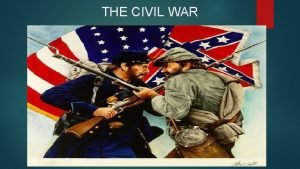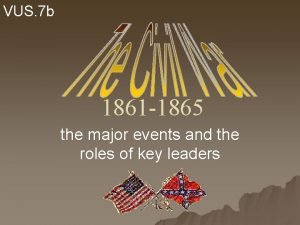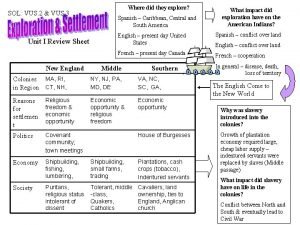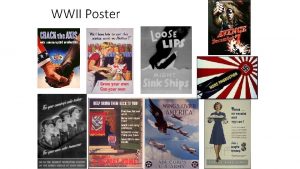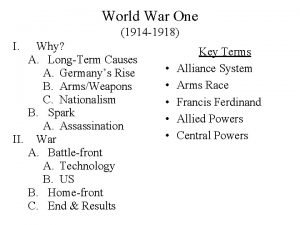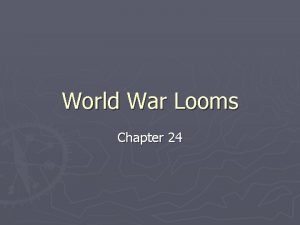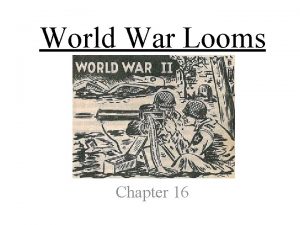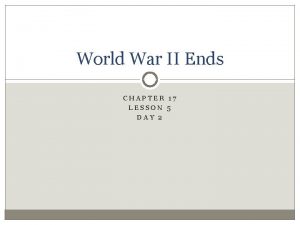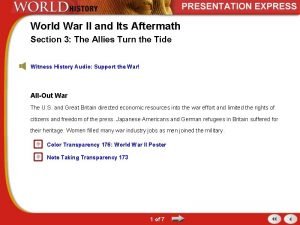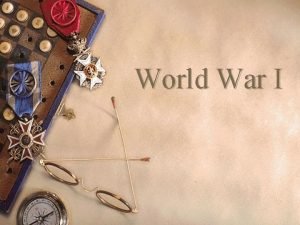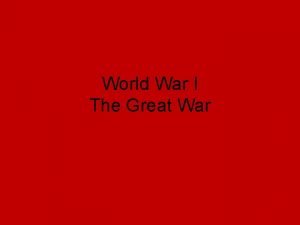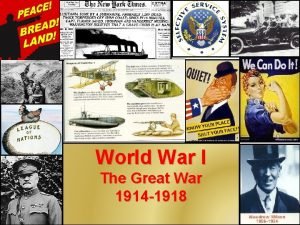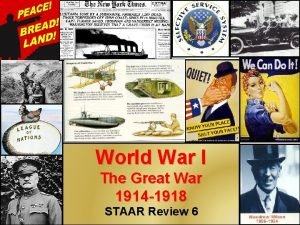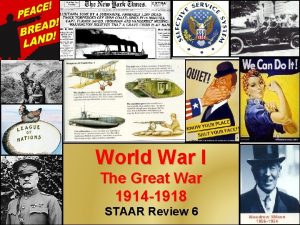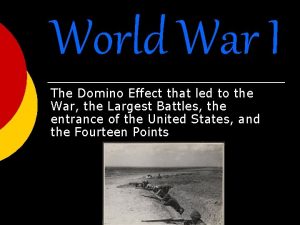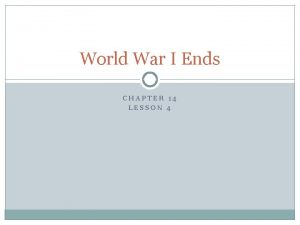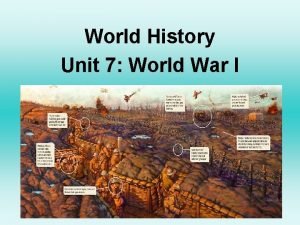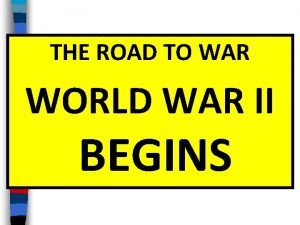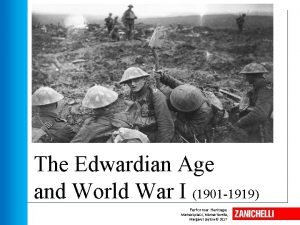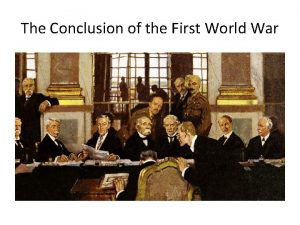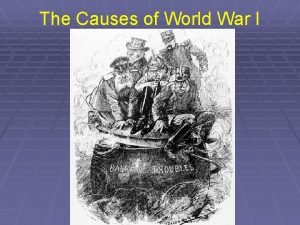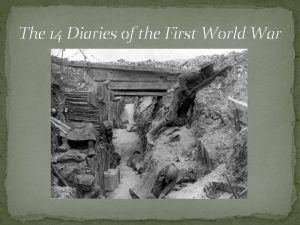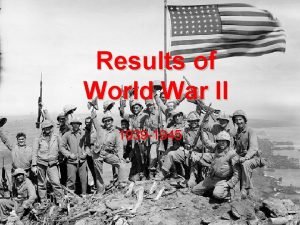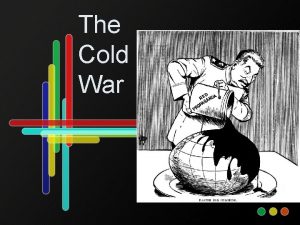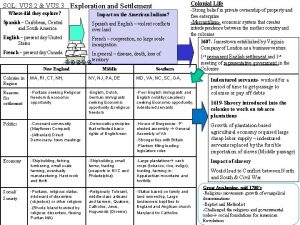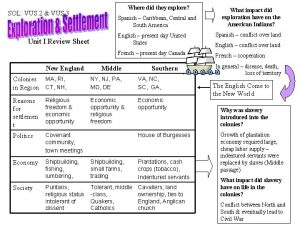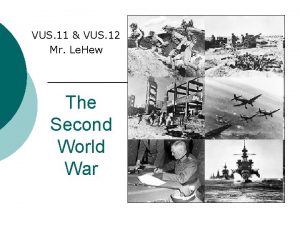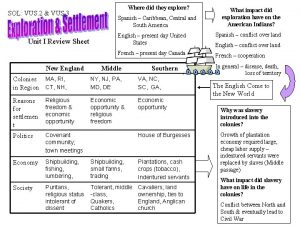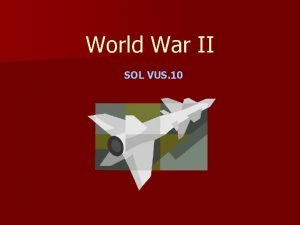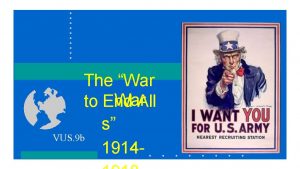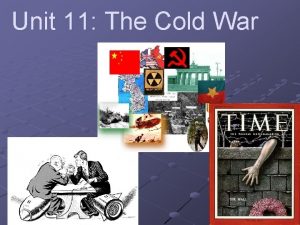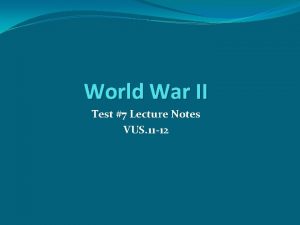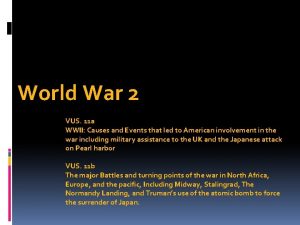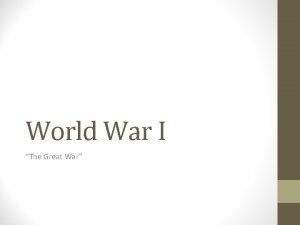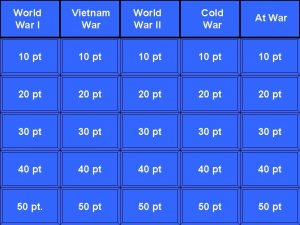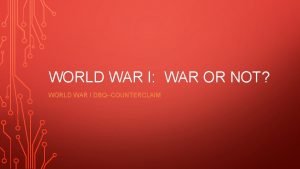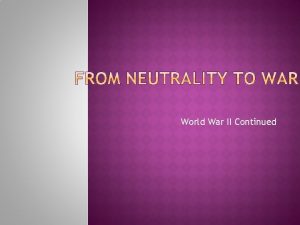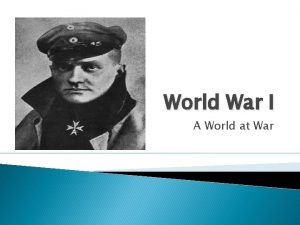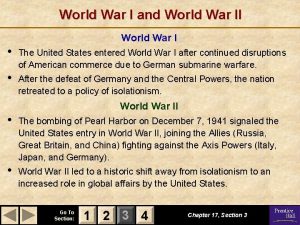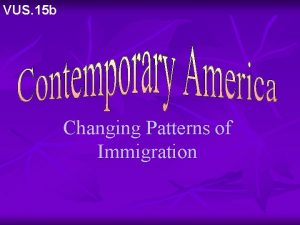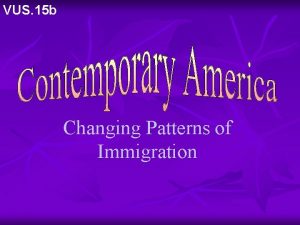World War II VUS 11 12 Essential Understandings













































- Slides: 45

World War II VUS. 11, 12

Essential Understandings The United States gradually abandoned neutrality as events in Europe and Asia pulled the nations toward war. Essential Questions • How did the United States respond to increasing totalitarian aggression in Europe and Asia? • What caused America’s gradual abandonment of its policy of neutrality?

• World War II began with Hitler’s invasion of Poland in 1939, followed shortly after by the Soviet Union’s invasion of Poland from the east and the Baltic countries. • During the first two years of the war, the United States stayed officially neutral as Germany overran France, most of Europe, and pounded Britain from the air (the Battle of Britain). In mid 1941, Hitler turned on his former partner and invaded the Soviet Union. The War in Europe


• Despite strong isolationist sentiment at home, the U. S. increasingly helped Britain. It gave Britain war supplies and old naval warships in return for military bases in Bermuda and the Caribbean. Soon after, the Lend-Lease Act gave the President authority to sell or lend equipment to countries to defend themselves against the Axis powers. Franklin Roosevelt compared it to “lending a garden hose to a next-door neighbor whose house is on fire. ”

• During the 1930 s a militaristic Japan invaded and brutalized Manchuria and China as it sought military and economic domination over Asia. The United States refused to recognize Japanese conquests in Asia and imposed an embargo on exports of oil and steel to Japan. Tensions rose but both countries negotiated to avoid war. The War in Asia

• While negotiating with the U. S. and without any warning, Japan carried out an air attack on the American naval base at Pearl Harbor, Hawaii, on December 7, 1941. The attack destroyed much of the American Pacific fleet and killed several thousand Americans. Roosevelt called it “a date that will live in infamy” as he asked Congress to declare war on Japan. • After Pearl Harbor, Hitler honored a pact with Japan and declared war on the United States. The debates over isolationism in the United States were over. World War II was now a true world war and the United States was fully involved.

Essential Understandings Wartime strategies reflect the political and military goals of alliances, resources on hand, and the geographical extent of the conflict. Essential Questions 1. What was the overall strategy of America and its allies in World War II? 2. How did America’s strategy during World War II reflect available resources and the geographical scope of the conflict? 3. Why were some battles of World War II considered turning points of the war?

Allied Strategy • America and its allies (Britain and the Soviet Union, after being invaded by Germany), followed a “Defeat Hitler First” strategy. Most American military resources were targeted for Europe. • In the Pacific, American military strategy called for an “island hopping” campaign

Axis Strategy • Germany hoped to defeat the Soviet Union quickly, gain control of Soviet oil fields, and force Britain out of the war through a bombing campaign and submarine warfare before America’s industrial and military strength could turn the tide. • Following Pearl Harbor, Japan invaded the Philippines and Indonesia and planned to invade both Australia and Hawaii. Its leaders hoped that America would then accept Japanese predominance in Southeast Asia and the Pacific, rather than conduct a bloody and costly war to reverse Japanese gains.

Major Battles and Military Turning Points North Africa • El Alamein—German forces threatening to seize Egypt and the Suez Canal were defeated by the British. This defeat prevented Hitler from gaining access to Middle Eastern oil supplies and potentially attacking the Soviet Union from the south. El Alamein Facts: 25, 000 German & Italian Soldiers Killed or Wounded 13, 000 Allied Soldiers Killed or Wounded Led to German surrender in Northern Africa by May 1943

Europe • Stalingrad—Hundreds of thousands of German soldiers were killed or captured in a months-long siege of the Russian city of Stalingrad. This defeat prevented Germany from seizing the Soviet oil fields and turned the tide against Germany in the east. BEFORE WWII DURING WWII

Europe • Normandy landings (D-Day)—American and Allied troops under Eisenhower landed in German-occupied France on June 6, 1944. Despite intense German opposition and heavy American casualties, the landings succeeded and the liberation of western Europe from Hitler had begun.

Pacific • Midway—(“Miracle of Midway”) American naval forces defeated a much larger Japanese force as it prepared to seize Midway Island. Coming only a few months after Pearl Harbor, a Japanese victory at Midway would have enabled Japan to invade Hawaii. The American victory ended the Japanese threat to Hawaii and began a series of American victories in the “island hopping” campaign that carried the war closer and closer to Japan. • Iwo Jima and Okinawa—The American invasions of the islands of Iwo Jima and Okinawa brought American forces closer than ever to Japan, but both invasions cost thousands of American lives and even more Japanese lives, as Japanese soldiers fought fiercely over every square inch of the islands. Japanese soldiers and civilians committed suicide rather than surrender. (Kamikazes)

• Use of the atomic bomb—Facing the prospect of horrendous casualties among both Americans and Japanese if American forces had to invade Japan itself, President Harry Truman ordered the use of atomic bombs on the Japanese cities of Hiroshima and Nagasaki to force the Japanese to surrender. Tens of thousands of people were killed in both cities. Shortly after the bombs were used, the Japanese leaders surrendered, avoiding the need for American forces to invade Japan.

Essential Understandings World War II solidified the nation’s role as a global power and ushered in social changes and established reform agendas that would preoccupy public discourse in the United States for the remainder of the 20 th century. Women entered into previously male job roles as African Americans and others struggled to obtain desegregation of the armed forces and end discriminatory hiring practices. Essential Questions • How did minority participation in World War II reflect social conditions in the United States? • How did minorities contribute to Allied victory?

Minority Participation • African Americans generally served in segregated military units and were assigned to non-combat roles but demanded the right to serve in combat rather than support roles. Additional Facts: -Nearly 1 million African Americans served in all-black units commanded by white officers. -Some African Americans did not want to serve in the armed services because of the harsh treatment they received at home; however, they were the minority. Many African Americans were dedicated to working for equal treatment in the services as well as at home. -The military was not fully integrated until 1948—after the war.

All-Minority Military Units • Tuskegee Airmen (African American) served in Europe with distinction. [Also known as the Black Eagles, fought in North Africa and Italy, escorted heavy bombers, and destroyed or damaged 400 Axis aircraft. ]

All-Minority Military Units • Nisei regiments (Asian American) earned a high number of decorations. [Thousands of Japanese Americans served in segregated units. The 442 nd Nisei Regiment became the most decorated military unit in US History. ]

Additional Contributions of Minorities • Communication codes of the Navajo were used (oral, not written language; impossible for the Japanese to break). • Mexican Americans also fought, but in units not segregated. • Minority units suffered high casualties and won numerous unit citations and individual medals for bravery in action. Lt. Francisco Mercado, Jr. awarded the Distinguished Flying Cross by General Leon W. Johnson.


Essential Understandings Specific groups, often the object of hatred and prejudice, face increased risk of discrimination during wartime. Essential Questions • What was the Holocaust and who were its victims? • What was the short-term and long-term significance of the Holocaust?

Terms to Know • Genocide: The systematic and purposeful destruction of a racial, political, religious, or cultural group • Final solution: Germany’s decision to exterminate all Jews

The Holocaust • Affected Groups = Jews, Poles, Slavs, Gypsies, and “Undesirables” – Undesirables included homosexuals, the mentally ill, and political dissidents • Jan. 30, 1933: Hitler becomes Chancellor of Germany; within months the 1 st concentration camp is established (Dachau), Nazis organize a boycott of Jewish businesses, books are burned, and laws are passed to strip Jews (and others) of their property, citizenship, and rights

The Holocaust • 1933 -1941: Jews (and others) are banned from practicing their occupations and attending public schools, synagogues are burned, and thousands are arrested – Kristallnacht: (Nov 9 -10, 1938) • 1942: Nazis implement the “Final Solution” • From 1942 -1945 hundreds of thousands of Jews are deported to concentration camps until the end of the war – Estimated loss of life: 5 -6 million Jews; up to 5 million others


• In the Nuremberg trials, Nazi leaders and others were convicted of war crimes. Significance (tried for crimes against the peace, crimes against humanity, and conventional war crimes) • The Nuremberg trials emphasized individual responsibility for actions during a war, regardless of orders received. • The trials led to increased demand for a Jewish homeland. (Palestine, modern-day Israel) Goering, Hess, von Ribbentrop, and Keitel in front row

Essential Understandings The conduct of war often reflects social and moral codes of a nation. The treatment of prisoners of war often reflected the savage nature of conflict and the cultural norms of the nation. Essential Questions • What was the purpose of the Geneva Convention? • How did the treatment of prisoners differ?

Geneva Convention The Geneva Convention attempted to ensure the humane treatment of prisoners of war by establishing rules to be followed by all nations. The treatment of prisoners in the Pacific Theater often reflected the savagery of the fighting there.

• In the Bataan Death March, American POWs suffered brutal treatment by Japanese after surrender of the Philippines. • Japanese soldiers often committed suicide rather than surrender. • The treatment of prisoners in Europe more closely followed the ideas of the Geneva Convention.

Essential Understandings Success in the war required the total commitment of the nation’s resources. On the home front, public education and the mass media promoted nationalism. Essential Questions • How did the United States organize and distribute its resources to achieve victory during World War II?

Economic Resources U. S. government and industry forged a close working relationship to allocate resources effectively. • Rationing was used to maintain supply of essential products to the war effort. • War bonds and income tax were used for financing the war. • Business retooled from peacetime to wartime production (e. g. , car manufacturing to tank manufacturing).


Human Resources • More women and minorities entered the labor force as men entered the armed forces. (over 6 million women entered the workforce for the first time) • Citizens volunteered in support of the war effort.

Military Resources • The draft/selective service was used to provide personnel for the military. (Soldiers were needed but many were allowed to remain at home and work as civilians until the invasion of Europe due to production demands) (Draft used NOT b/c men didn’t want to fight but b/c the numbers were needed quickly!!!)

Essential Understandings Contributions to a war effort come from all segments of a society. Women entered into previously male job roles as African Americans and others struggled to obtain desegregation of the armed forces and end discriminatory hiring practices. Essential Questions • How did women and minorities contribute to America’s efforts during World War II?

Women During World War II • Women increasingly participated in the workforce to replace men serving in the military (e. g. , Rosie the Riveter). • They typically participated in non-combat military roles.

African Americans During World War II • African Americans migrated to cities in search of jobs in war plants. • They campaigned for victory in war and equality at home. “DOUBLE “V” CAMPAIGN”

Essential Understandings Prejudice, coupled with wartime fears, can affect civil liberties of minorities. Essential Questions • How were Americans of Japanese descent treated after U. S. entry into World War II, and why?

Reasons for Internment • Strong anti-Japanese prejudice on the West Coast • False belief that Japanese Americans were aiding the enemy

Internment of Japanese Americans • Japanese Americans were re-located to internment camps. – Korematsu v. United States (1944) • Internment affected Japanese American populations along the West Coast. The Supreme Court upheld the government’s right to act against Japanese Americans living on the West Coast of the United States. A public apology was eventually issued by the U. S. government. Financial payment was made to survivors.

Essential Understandings During World War II, the media and entertainment industries saw their role as supporting the war effort by promoting nationalism. Essential Questions • How did media and communications assist the Allied efforts during World War II?

Media/Communications Assistance • The U. S. government maintained strict censorship of reporting of the war. • Public morale and ad campaigns kept Americans focused on the war effort. • The entertainment industry produced movies, plays, and shows that boosted morale and patriotic support for the war effort as well as portrayed the enemy in stereotypical ways.


 Enduring understanding
Enduring understanding The civil war
The civil war Greyhound vus
Greyhound vus Vus.10b when was the stock market crash?
Vus.10b when was the stock market crash? Vus 7a what event sparked secession of the southern states?
Vus 7a what event sparked secession of the southern states? Vus review
Vus review Eid ul-fitr quotes from qur'an gcse
Eid ul-fitr quotes from qur'an gcse Enduring understandings examples
Enduring understandings examples Essential non essential fatty acids
Essential non essential fatty acids War at home and abroad madison
War at home and abroad madison Vietnam war
Vietnam war Welcome 1 unit 10 lesson 1
Welcome 1 unit 10 lesson 1 Presidential and radical reconstruction venn diagram
Presidential and radical reconstruction venn diagram Was josette dugas pro war
Was josette dugas pro war Sein i datid
Sein i datid Contact force examples
Contact force examples Civil war first modern war
Civil war first modern war Bringen simple past
Bringen simple past Toward civil war lesson 3 secession and war
Toward civil war lesson 3 secession and war Fought
Fought Chapter 30 the war to end war
Chapter 30 the war to end war Chapter 30 the war to end war
Chapter 30 the war to end war Bandwagon propaganda poster
Bandwagon propaganda poster Results of the world war 1
Results of the world war 1 Chapter 24 world war looms answers
Chapter 24 world war looms answers Chapter 16 building vocabulary world war looms
Chapter 16 building vocabulary world war looms Lesson 5 world war 2 ends
Lesson 5 world war 2 ends World war ii and its aftermath section 1 quiz
World war ii and its aftermath section 1 quiz What was the immediate cause of world war i brainpop
What was the immediate cause of world war i brainpop World war 1 and the russian revolution chapter 27
World war 1 and the russian revolution chapter 27 Zimmerman telegram
Zimmerman telegram The 4 causes of ww1
The 4 causes of ww1 What was the cause of world war 1
What was the cause of world war 1 M.a.i.n. causes of ww1
M.a.i.n. causes of ww1 Ww1 domino effect
Ww1 domino effect Chapter 27 lesson 4 world war 1 ends
Chapter 27 lesson 4 world war 1 ends Total war world history definition
Total war world history definition Cost of world war 1
Cost of world war 1 World war 2 thesis statement
World war 2 thesis statement Ww2 causes
Ww2 causes The edwardian age zanichelli
The edwardian age zanichelli Conclusion of first world war
Conclusion of first world war Long term causes of world war 2
Long term causes of world war 2 What was the cause of world war 1
What was the cause of world war 1 Arte 14 - diaries of world war i
Arte 14 - diaries of world war i Results of the world war 1
Results of the world war 1

